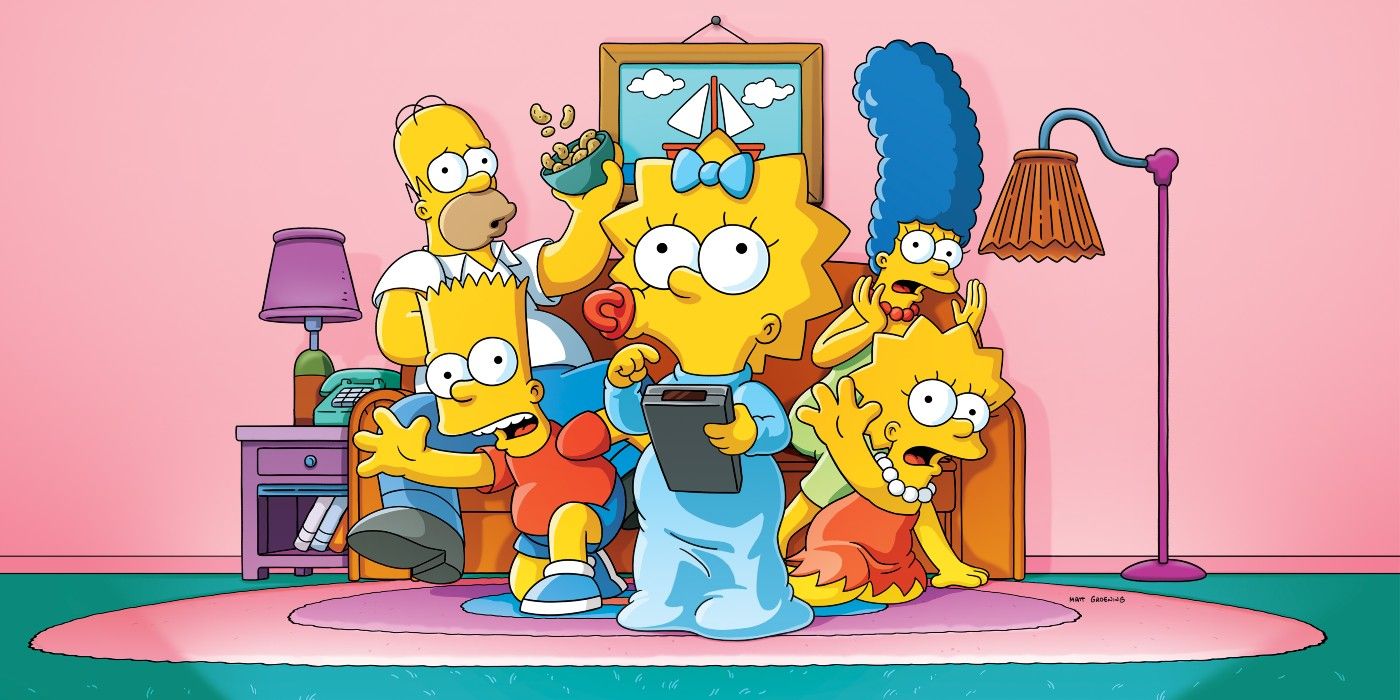Since its debut, The Simpsons has remained a cultural mainstay, but many fans still don't know the reason why the characters have yellow skin. The Simpsons may not be the phenomenon it once was, but the show's satirical take on the modern American family garnered success on its debut that continued throughout the following decade and beyond. Despite a recent decline in popularity, The Simpsons remains on the air to this day – making it the longest running scripted show in history (and one viewers can now finally see in its original aspect ratio on Disney+).
The Simpsons longevity is a testament to how popular the show was at its apex, consistently bringing eyes to the Fox network week on week during the height of its popularity. Not only was the writing razor sharp, the show itself stood out visually. Based on character designs by original creator Matt Groening, the Simpsons family and the various characters that inhabit Springfield, wherever that may be, have a distinct design that remains wholly unique even today.
The most obvious difference between The Simpsons and other cartoons, aside from the Simpsons family not having real hair, is the characters' yellow skin. Now, this design quirk has become an accepted part of popular culture, but at the time the show debuted, audiences weren't used to the striking visual – and it seems this was intentional. In a 2000 documentary detailing his life and career, Groening elaborated on his characters' distinctive skin tone: "Yellow skin: why... if you're flicking around with your channel changer very fast and you zoom by The Simpsons there's nothing else that looks like them on TV, so therefore we stand out."
Groening has since elaborated on the genesis of The Simpsons' iconic yellow skin. In a BBC interview back in 2007 for the launch of The Simpsons Movie, the cartoonist said he didn't want the "conventional cartoon colours" when the show was being developed. According to Groening, he was shown character designs by an animator who had used yellow ink, to which he responded "this is the answer." As it turns out, yellow is actually the most eye-catching color, due to the way brighter colors reflect more light and stimulate the eye. This may explain why other big cartoon characters, such as Spongebob Squarepants, are also yellow. It seems the lone animator that approached Groening back in the show's pre-production phase may have known something about color theory.
However, former showrunner and writer on The Simpsons Mike Reiss seemingly revealed there was more to the story than what Groening spoke about. In his book Springfield Confidential, Reiss writes that “Bart, Lisa and Maggie have no hairlines – there’s no line that separates their skin from their hair points. So the animaters chose yellow – it’s kinda skin, kinda hair.” It seems this could explain why the animator Groening referred to made the choice to paint the characters yellow, but it seems an oddly specific reason, even with The Simpsons' strict character design rules, and one that Groening would surely have shared at some point.
Whatever the specific reason behind the decision to paint characters yellow behind the scenes of The Simpsons, there's more to it than Groening wanting his characters to stand out. In the 2000 documentary My Wasted Life, the creator explained how the yellow color "looks like there's something wrong with your TV set," before explaining that he "thought that was appropriate to The Simpsons symbolically." Exactly what he was getting at here is up for debate, but one likely explanation is he was talking about the show depicting a dysfunctional version of modern American family. The Simpsons, as Groening said in a 1991 documentary "are in a struggle to be normal" and "they fail miserably every time and that abnormality is what makes them funny." Yellow skin, then, becomes a visual symbol of the family's, and by extension, of the modern American family's, abnormality. It's pretty deep, but then The Simpsons was always more than just a cartoon, and the yellow skin is yet another reminder of what made the show great.


